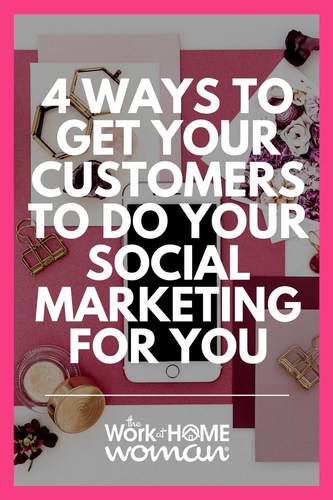Looking for creative ways to use social media to promote your products? Many established brands and innovative startups have started to mix social marketing with e-commerce to improve their sales. Below we will look at several examples and how you can apply them to your own business and get your customers to do your marketing for you.
 Combining Social Marketing and E-commerce
Combining Social Marketing and E-commerce
Many companies have tried and failed to combine social media and e-commerce. In 2012, several major brands including JC Penny, The Gap, and GameStop were some of the first to attempt to launch their very own social media stores. Unfortunately, many audiences simply weren’t ready to make purchases directly from social media platforms like Facebook. But today that’s beginning to change as companies like Twitter are starting to incorporate buy buttons directly into their interface, establishing new norms within social media.
Consequently, the lines between traditional e-commerce sites and social media are beginning to blur. This trend will surely only increase as we move forward. And it isn’t just about what features and advertising you can pay for, it’s about how your customers are interacting with and sharing your products as well.
1. Customer Images and Product Pages
BlackMilk, the women’s fashion retailer, encourages their customers to take selfies with their products. BlackMilk then posts and tags those photos directly to their official Facebook and Instagram profiles. Those photos are then integrated directly into their product pages, allowing potential customers to see how the clothing fits on actual customers.
Apart from providing free content for BlackMilk, this process also acts as a powerful social proof, the informational influence of social approval, that can ultimately encourage future sales. BlackMilk achieves this with the use of the “Show. See. Sold” add-on through the Shopify platform, which allows visitors to consume and filter through products, but there are a variety of ways that you can achieve the same results. For example, there are numerous plugins available for Instagram and WordPress that can help show your tagged photos on Instagram directly on your website.
After you have installed a plugin, all you have to do is encourage your customers to post photos with your products on social media, and then tag those photos with a specific hashtag. Odds are you already have people buying products on your site, taking pictures while using your products, and posting them to social media. All it takes one additional step to make that social interaction work for you and encourage people to make spontaneous purchases.
2. Product Photos and Product Pages
Nordstrom has over 2.7 million followers on Instagram, and they’re all looking to keep an eye on the latest products and trends in the fashion industry. Whenever a Nordstrom fan finds a product they just can’t live without, it’s fairly common practice for that fan to leave a comment on Instagram, asking Nordstrom where they can purchase that item. Until recently, Nordstrom has mostly handled these fans by responding to those comments on an individual basis.
Today, Nordstrom has streamlined this process by sending people directly to their new site, which acts as a bridge between the product photos posted on Instagram and Nordstrom product pages. The new site, like2buy, makes it as simple as possible for fans to purchase the next product that catches their eye the moment that it does.
One way you can emulate this for your own brand is to create your very own Like2Buy-type website, connecting all of your e-commerce merchandise to photos of your own. But if you’re not looking to launch a brand-new site and endure all the trials and troubles of doing so, there is a simple alternative. Start linking to product URLs directly from any product photos you post on social media. For example, you can post a bit.ly URL in the comments section of your Instagram page directing your viewers to where they can pick up featured products, or even a quick mention in your next photo tweet.
3. Familiar Spaces
Pinterest is one of the most popular social networks for e-commerce. It’s filled with dazzling pictures, the site is easy to use, and many businesses have tried to build their brand there. However, without the right approach to monetization, your Pinterest page is likely to be little more than a way to drive traffic to your site.
One social e-commerce site, Wanelo, recently set out to solve the problem of converting customers from casual social visitors to active e-commerce shoppers by creating what they call a “social shopping site.” The site more or less resembles a real-life window display, while still providing the user with a similar look and feel to a familiar space like Pinterest. On the site, visitors are able to tag and categorize items that they like, share those items in one click, and find similar products to the ones that they’ve said that they liked.
One way you can join in on Wanelo’s success is to consider using one of the numerous collage-style themes available online to help you create your own product galleries. You can use these collage themes to match your products together, and then link them to your e-commerce shop, allowing you to create these types of familiar spaces for your customers. You can find a variety of premium collage-type themes available at StudioPress, or directly through the WordPress website.

4. Using Customer Feedback
You may not have heard of Fancy.com, but anyone looking to emulate a successful e-commerce platform should definitely check it out. The way the site works is simple. Fancy allows you to search for, virtually collect, and then buy items from a variety of companies online. More importantly, it offers a subscription service, delivering premium gourmet food to its members with a social twist.
Fancy has over 2 million active users who are able to vote on which types of food will show up in the box every month. This customer input demonstrates to Fancy customers that the brand cares about their feedback, it incorporates social elements directly into the e-commerce experience, and it helps to build brand loyalty in the process.
Setting up your own subscription-based delivery service can be involved, but is doable with sites like Cratejoy. Use your own social media pages to ask your fans what kinds of variations in your products that they would like to see, and then deliver on the most popular.
Conclusion
As you can see, there are numerous ways for you to get your customers involved in social marketing. As technology and the social web continue to evolve there will be more ways in which consumers can influence your marketing strategies. It’s up to you to jump in and start including social marketing as part of your e-commerce business strategies.
Do you use social marketing to promote your business? Which platforms are you using? Drop us a note; we’d love to hear from you!








Leave a Comment